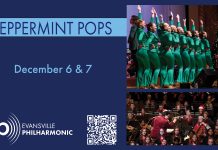
North Junior High School seventh grade English Language Arts teachers got creative for their unit on the Titanic, by visually creating it in the gymnasium at the school, and giving students an opportunity to experience what it may have been like to be a passenger.
Teachers are dressed in period costume, and students received their “tickets†to board yesterday, designating who they were – with a biography of that person – and what class they were sailing under. Based on that, students are having experiences today learning things that for example, a person who was sailing third class might experience. So, while first class passengers might be learning to Waltz, third class passengers might be learning to clog. Food from that time period is being served, games are being played, etc… through stations throughout the gym.
All of this is a cross-curricular precursor to reading, writing, and history units for the next grading period, so that students have background knowledge of the subject matter when they start learning more. Students will begin reading books about the Titanic in their Literature Circles next week.





CROSS CURRICULAR studies cut through traditional subject matter lines and explore relationships of subjects to one another.
For example, a school-wide program in “writing across the curriculum” entails teaching writing in every subject-matter department. Teachers of all the arts and sciences develop and implement a writing program in their department that coordinates with the other writing programs throughout the school.
In traditional writing programs, those that are not cross curricular, writing is taught only in English classes, and teachers in other subjects depend on the department of English to teach the skills that students need to write in all other subjects.
While there is widespread agreement among educators that students ought to understand the interactions of the various disciplines, some teachers feel that they haven’t enough class time to cover the basic skills and fundamental concepts in their subjects, let alone to discuss how their subject interacts with other subjects.
_____
Comments are closed.